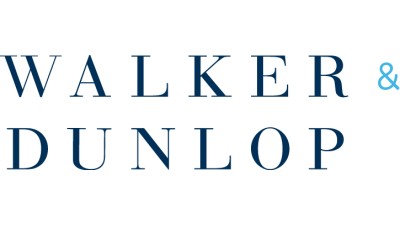Ventas CEO Debra Cafaro On Building A Portfolio For The New Ecosystem Of Care

As the world’s largest generation, the baby boomers, start to enter retirement, many real estate investors have placed long-term bets on housing and medical care for the aging population.
Healthcare facilities, medical office assets, nursing homes, independent living communities and senior housing of all kinds stand to benefit from a coming influx of older users and residents.
Still, some of the biggest players in the investment world are working to make sure that they diversify their portfolios away from a single asset class. But the coronavirus pandemic, which plagued senior housing but boosted research laboratories, has upended strategies for some real estate owners in these demographic-driven asset classes.
Ventas, one of the world’s largest owners of healthcare and senior housing assets, made headlines in 2017 when it sold a portfolio of 36 skilled nursing facilities for $488M. Since then, the Chicago-based REIT has been restructuring its portfolio by investing more in medical office buildings and life sciences laboratory space, including paying $1B for two life sciences properties in South San Francisco.
On this week’s Walker Webcast, Ventas CEO Debra Cafaro outlined the investment philosophy behind the restructuring, pointing out how the moves toward medical office and life sciences create a wider demographic basis for Ventas’ users and diversifies its portfolio for the future not just of healthcare, but of care in general.

“These five areas are demographically driven forms of real estate,” Cafaro said. “The ultimate users, whether they are senior housing residents, or people who are going to use the drugs that are discovered in our labs, or visit our medical offices, they're all driven by specific demographic and healthcare trends.”
Walker & Dunlop CEO Willy Walker pointed out that the average age that Americans move into senior housing is 84, much older than the average age of current baby boomers. But, Cafaro said, medical office buildings should see a spike in demand from an aging population much sooner than senior housing.
“Ten thousand baby boomers turn Medicare-eligible every day,” Cafaro said. “They visit the doctor five times as much as the rest of the population, which plays to the medical office holdings.”
Similarly, lab space will be in demand to create therapies for aging adults in the near future. Cafaro described how Ventas has partnered with 15 top research universities including Duke, Johns Hopkins and Yale, and has purchased life sciences spaces surrounding top universities, including a portfolio of lab spaces in Cambridge, Massachusetts.
Seeing how hard the coronavirus pandemic hit demand for nursing facilities, Ventas’ disposition of its skilled nursing assets in 2017 now seems like a very prescient move, Walker said, citing that the first widely reported outbreak of Covid-19 was at a nursing facility in Washington state. And the pandemic has only deepened competition for life sciences space. Cafaro mentioned that capitalization rates have continued to compress for life sciences assets throughout the pandemic, unlike other real estate asset classes.

The senior housing market, which has by some accounts been overbuilt in anticipation of baby boomers’ arrival, suffered during the pandemic as they, too, became hotbeds for Covid-19. Assisted and independent living facilities still face elevated vacancies and a difficult road to prove they are safe, healthy spaces and regain Americans’ trust. But recent numbers have been encouraging.
“In April of this year, we saw more seniors move into our senior living communities than we saw in any month since June of 2019,” Cafaro said. “And what that says to you is we are offering something that is highly valuable to these residents and their families, after everything that we've been through in all the headlines.”
For Cafaro and for many senior housing investors, the demographics are still very compelling. Her team estimates that the population 80 years or older, currently around 12.5 million Americans, will grow to 20 million by 2030.
“That group grows at a pace of 3% to 4% over the next couple of years and spikes to 6% in 2027,” Cafaro said. “We’re adding 2 million potential customers, as I like to think of them, just in the next couple of years.”
On May 19, Walker will host Mike Meldman, founder of Discovery Land Co. Register here for the event.
This article was produced in collaboration between Walker & Dunlop and Studio B. Bisnow news staff was not involved in the production of this content.
Studio B is Bisnow’s in-house content and design studio. To learn more about how Studio B can help your team, reach out to studio@bisnow.com.

